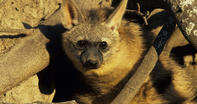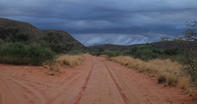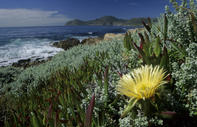Species Survival
Habitat is the space in which an organism lives. It refers to everything that a species uses in its home, for instance, the amount of sunlight, food, the availability of shelter, the other species with which it shares the area, and even its predators. An ecological niche refers to how the species fits into that picture.

It suggests an evolutionary moulding of a species by the factors in its habitat so eventually, it fits hand in glove with the rest of the community. The total physical area that a species spreads across, which could be several habitats that differ slightly from one another, refers to its geographic range.
Climate is the single most important factor that ultimately decides whether a species can survive in a habitat or not. Here the concept of a bioclimatic envelope emerges, which is the crux of how scientists determine the future survival of a species in its home range as the climate changes.
A bioclimatic envelope is an attempt to quantify an aspect of a species' niche. It is a mathematical summary of the full range of climatic conditions likely to be experienced by an organism over the full extent of its geographical range.
How well that range is quantified and finally represented by its bioclimatic envelope depends on how much data is available about that species and its niche. As conditions warm up, species are - in theory - expected to move towards the poles or higher in altitude to seek out their preferred temperatures.
Changing Habitat

South Africa’s plant regions, which are divided into seven broad categories - desert, forest, fynbos, grassland, Nama-karoo, savannah and succulent karoo - are expected to follow a similar 'migration' as they shift their distribution in response to changing conditions.
The question always remains: how much viable habitat will they find as they shift their geographic range in response to a changing bioclimatic envelope? To understand the impact of climate change on bioclimatic envelopes, scientists fed the extent and requirements of South Africa's different ecological regions into their number-crunching computers.
These eventually spat out a map with a projection of the South African landscape by 2050 - the bioclimatic zones shifted south-east, with a warming and drying sweeping in from the north-west. Within the next fifty to one hundred years: the bioclimate of the country shows warming and aridification trends which are sufficient to shrink the area amenable to the country's biomes to between 38% and 55% of their current combined (regional) coverage.
The largest losses occur in the western, central and northern parts of the country. These include the virtual complete loss or displacement the existing succulent karoo biome, an extensive eastward shift of the Nama-karoo biome and contraction of the savanna biome to the northern borders of the country and its expansion in the grassland biome. The species-rich fynbos biome may lose many species.
Shifting Territories

Most of today's plants and animals have evolved under global temperatures of about 3°C to 5°C cooler than the interglacial period in which we currently live, and we are changing conditions faster than most species will be able to adapt. Species will shift their territories and, in some cases, species compositions will look, unlike anything we've seen before.
Many species have already shifted their ranges during the past three decades owing to changes in their localised climate but these shifts are often at an individual level rather than a community level. If the fynbos eco-climate shifts south-east, it will push out over the ocean where no terrestrial species can follow.
Adaptation to conditions at a genetic level differs between species but, in most cases, it takes millions of years or as many generations. Different species will respond uniquely: a common housefly, which might hurry through its lifecycle in 20-odd days, will produce many generations within a season, and hundreds of thousands within a decade.
By Leonie Joubert